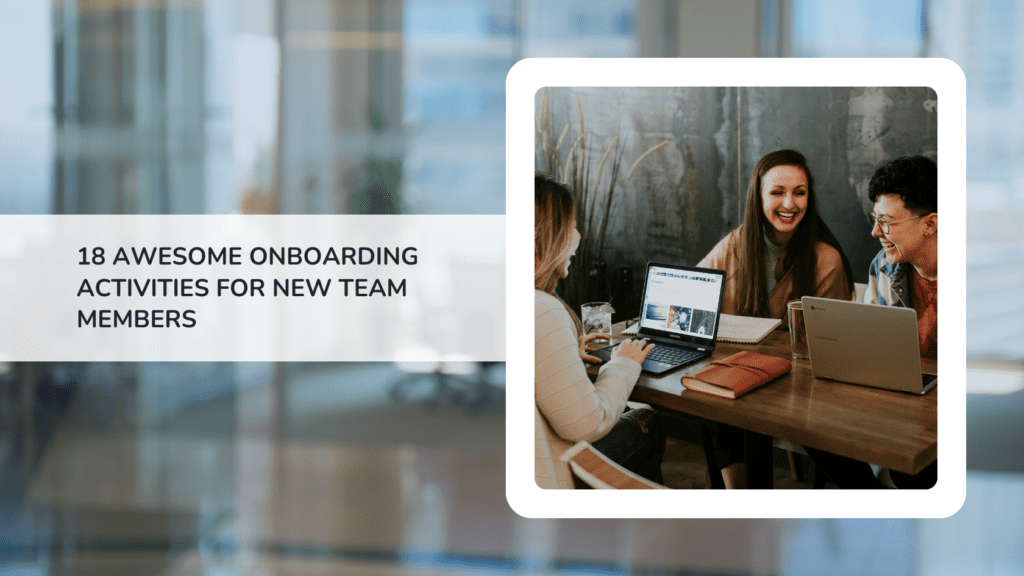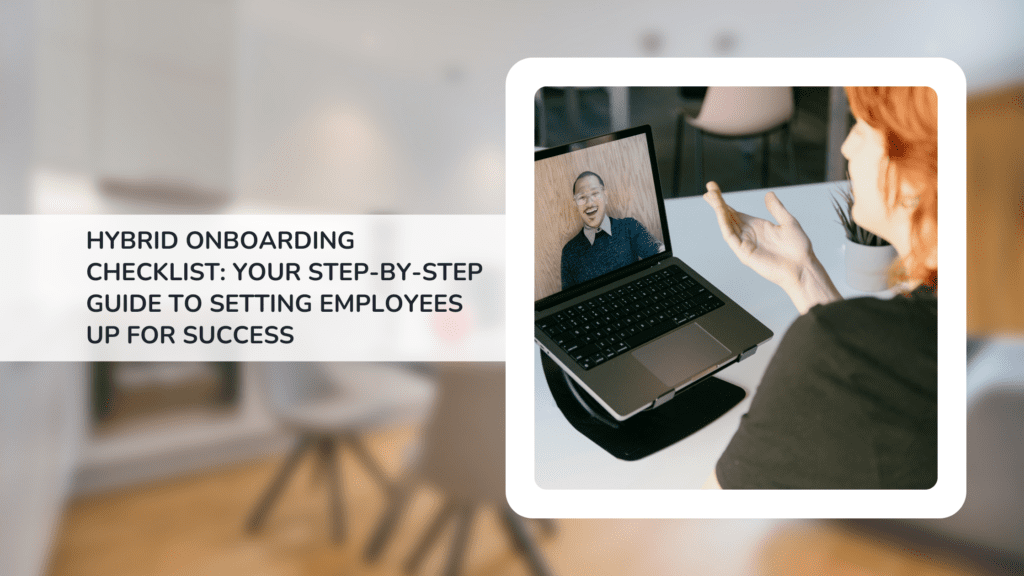With five vastly different generations currently in the workforce, organizations are being challenged to create great corporate cultures that appeal to everyone.
The modern employment market is evolving at a rapid pace. Technology is reshaping the way we work. A shift in power from employers to employees is changing the dynamic of the job market and putting a new importance on the employee experience. And increased life expectancies mixed with economic shifts pertaining to cost of living, pensions, and social security mean that employees are working longer than ever before. In fact, according to The Economist, retirement is starting significantly later today than it once did – a trend which has held true through the past three decades. In the mid-1980s, 25% of men aged 65 to 69 were still working; today, that number is nearly 40%. And according to the Bureau of Labor Statistics, approximately 25% of the workforce is forecasted to be above the age of 55 by 2024.
Because of these factors, the demographics of today’s workforce are growing more diverse and varied by the day – particularly as it pertains to generations of employees. There are currently five generations coexisting in today’s workforce. As of 2018, they are:
- Traditionalists (born before 1946): 2% of the workforce
- Baby Boomers (born between 1946 and 1964): 25% of the workforce
- Generation X (born between 1965 and 1976): 33% of the workforce
- Generation Y, or Millennials (born between 1977 and 1997): 35% of the workforce
- Generation Z (born after 1997): 5% of the workforce
As an employer, one of the biggest challenges that this presents to you is the question of how to effectively manage an organization comprised of such a diverse array of generations – and how to create a great company culture. Why? Because each of these groups of people lived through significantly varied periods of time – spanning from post-World War II Depression-era to the tech era, and everything in between. And as such, each of these groups of people have varied values, skillsets, preferences, priorities, proficiencies, opinions, motivators… and the list continues.
This mix can leave employers scrambling for a balance that not only appeases everyone but makes for a successful organization and a positive culture. But with the right approach, companies can create a multigenerational office culture that not only functions but thrives. Here are three key tactics to help you do so.
1. Embrace Generational Differences and It Will Pay Dividends

The first thing you need to emphasize within your organization in order to create a high-functioning, multi-generational company culture is to stop fighting or downplaying differences and embrace them instead. That’s because a diverse range of staff bring to the table a wide array of skillsets, experience, and levels of expertise. And when teams are managed strategically, they complement each other to create successful outcomes.
You know the stereotypes. Those lazy, entitled, tech-obsessed, overeager millennials. And the stubborn, difficult-to-train, stuck-in-their-ways Boomers. Every generation has its own set to contend with. The key to creating a highly functional cross-generational culture is to embrace a mindset that challenges assumptions, biases, and preconceived misperceptions. Here are a few ways to do it:
Look at Individuals and Throw Generations Out the Window
At the end of the day, looking at employees by generation is a fruitless endeavor. Instead, look at them as individuals. Gauge them based on their personal performance, their attitude, their outlook, their expertise, and the value they bring to the table. Because the Boomer who wears a business suit and seems uncomfortable with technology may be highly creative. And the gen–Xer who leaves early and files reports from home may not be out partying all night but may be sharing childcare with a spouse.
Emotional intelligence plays a big role in your ability to empathize with and understand individuals on your team and in turn be better able to manage them. With our Emotional Intelligence training and development, you can help equip your leadership to increase self-awareness, learn to self-regulate behaviors, develop greater empathy, and better social skills for leadership in order to more effectively manage employees from all generations.
Encourage Colleagues to Find Common Ground
People from different generations may find they have more in common than they might think – whether it’s sports, hobbies, movies, TV shows, a love of great food, or fitness. It’s a mistake to believe that shared interests don’t exist among diverse generations. You can do this with a few simple tactics, like having staff re-introduce themselves at meetings or to introduce another member of the team, or even offering a small company program that provides a small amount of budget for colleagues to invite another colleague out to lunch and get to know them better.
If you’re in search of a way to help your team acquainted on a deeper level, you might want to check out our team building activity, Getting to Know You. In this activity, your team will get together to learn more about each other in a fun, low-pressure, and light-hearted environment.
Avoid Assigning Tasks Based on Perceived Interests
While you always want to assign roles, responsibilities, and tasks based on strengths, it’s equally important that you don’t avoid assigning projects to employees based on their age, generation, or perceived interests or skills. While certain things might not typically be a forte for a particular generation, this offers a great chance to provide growth opportunities and challenges, which in turn leads to happier employees. In fact, according to Snack Nation, 61% of employees who indicated they were engaged at work attribute it to feeling challenged, and those who felt they had a lot of opportunity for growth reported an average job satisfaction of 83%. So, you may want to consider assigning projects and teams based on cross-functional skill and the teammates’ ability to complement one another. Look at each project objectively and assign a mixed team to tackle it. This will help ensure multigenerational employees have consistent opportunities to learn from one another.
If you’d like to equip your leadership team with the tools to inspire collaboration and success amongst employees, consider getting them together for a Building Team Collaboration Consulting solution which will help them encourage colleagues to communicate and leverage each other’s strengths.
Embrace and Celebrate What Each Generation Brings to the Table
The holistic value offered by a multigenerational office can’t be understated. It should be celebrated and embraced. In fact, Harvard Business Review argues that generations actually have more in common than what divides them. For instance, flexibility has been seen as being key to the way to engage Millennials. But according to research by PWC, Gen Xers also value flexibility at the same rate. And both Millennials and Gen Xers have grown up working and playing with technology, from touch–screen tablets to social networking, and use all available technology effortlessly to work at any time, from anywhere.
But it’s not just their similarities that bring value. Organizations should also celebrate their differences. For example, Traditionalists and Boomers have the kind of experience that comes from years in the workforce—they really have seen it all. Gen–Xers and millennials can benefit from their experience. On the other hand, Gen Xers have developed the skills to be independent and self–directed. And with all these differences, there are lessons to be learned and benefits to be gained from understanding and appreciating one another. With this understanding in mind, the next step is to create an environment that leverages it all. That’s where the next two tips come into play.
2. Understand That Cross-Generational Success Starts with Management and Trickles Down

Great leaders are integral to unifying any team. So, when it comes to the task of creating a great multi-generational company culture, it has to start with management and then be instilled amongst the rest of the team. Company leaders are the key to reconciling different generations, and this means understanding the differences and similarities between them, and then adapting their management style accordingly. While all organizations will have their own unique culture and challenges, managers can take steps to more adequately deal with a multi-generational team. Here are a few tips to make it work.
Learn to Coach and Mentor
According to Bentley University’s Multi-Generational Impacts on the Workplace report, coaching is one of the most effective methods of getting the best out of your staff. In fact, 8 out or 10 millennials prefer that their managers act as a coach and mentor who provides collaborative guidance to help reach their goals. So, rather than preaching one-way feedback to your team, make the feedback process collaborative. Be proactive in giving insight and advice. Allow your team to ask questions and provide rationale for your thoughts.
At Outback, we offer a Coaching Fundamentals solution that can help managers hone their skills and act as more effective coaches and mentors to their team.
Build Trust Through Accountability
To bridge the generation gap, it’s important that managers ensure there is an even playing field across the entire team. Understanding that each generation has preconceived notions about one another, it’s important to build trust through accountability. Show your team that there are set expectations for everybody and that they are consistent throughout the company and enforce them accordingly. Making sure that everyone is treated equally will help keep everyone acting as equals. One great way to do this is to set clear role expectations to ensure a fully functional and enabling work environment. For instance, studies have shown that Millennials have a thirst to learn and are respectful of older generations, so setting clear role expectations can benefit the organisation as it leads to seamless learning and right role fitment.
It’s also important to have a thorough performance management system in place that spans the entire company. This includes setting clear, quantifiable, and actionable goals and timelines for everyone, creating accountability, and having scheduled check-ins to make sure everyone is on track. If you’re interested in creating even stronger performance management systems within your organization, you may want to try our in-depth Performance Management solution to learn how to provide more impactful feedback and measure performance more accurately.
3. Bring People Together and Encourage Collaboration

One of the biggest challenges in any professional environment is getting teammates to see each other as more than just colleagues, to understand and appreciate each person’s individual value, and to create the strong personal bonds that allow teammates to work more closely together. And when it comes to a multigenerational office, this task can be even tougher. But encouraging these relationships is a great way to break down barriers between people to help enhance your organization’s culture. Here are some ways you can do it.
Encourage Mentorship and Reverse-Mentorship Opportunities
We know that multigenerational offices offer an abundance of variety in expertise and skillset, which in turn produces great opportunities for mentorship and knowledge sharing. It’s important to encourage mentorship – and reverse-mentorship as well.
This can be things like older generations including younger staff in senior-level meetings, client interactions, new business pitches, and client dinners, or younger team members having the opportunity to share technology or trend-related insights with older generations, there is an opportunity for win-win personal interaction in the office. This will help each generation to see and appreciate the value held by others while encouraging proactive and mutually beneficial engagement. As a manager, it’s important to proactively facilitate these opportunities – whether it’s something small like facilitating meetings between individual staff members or encouraging “lunch and learn” opportunities for staff to present and share their expertise with the team.
Leverage the Power of Team Building Activities
According to the National Business Research Institute, employee satisfaction skyrockets nearly 50% among those who feel they have close relationships on the job. So, it’s important that your team see each other as more than just people they work with and understand each other as unique individuals.
Getting people together in a new context is a great way to build personal bonds. And at work, this often means facilitating opportunities for colleagues to engage with one another on something other than work. It can be something as small as a monthly potluck lunch, a company BBQ, or after-work drinks. Or, you can opt for something a bit more involved and hands-on, like a structured team building event or a company retreat (for more on this, check out our free online guide: Everything You Need to Know About Planning the Ultimate Company Retreat). However you choose to do it, creating these alternative opportunities for engagement is a great way to build relationships.
If you’re looking for a great team building activity, we offer a selection of more than 30 options to fit any need.
Facilitate Collaboration Opportunities Based on Shared Value and Interest
Creating teams that work on projects that aren’t strictly work-related is a great way to get people collaborating in a lighter-hearted and less formal capacity. Committees are an easy way to build teamwork and keep employees watching out for each other. For instance, this could be a birthday committee that keeps track of who has birthdays and when and takes charge of getting a card and a cupcake for that team member. It could also be a wellness committee to create an information board each month featuring an important health topic. Blending the generations by assigning them to committees gives them a neutral place to work together while serving others, creating a space for connection and appreciation. Ask your team what committees could be created and prepare to be impressed with what they suggest.
Focus on a Common Goal
One of the best ways to get colleagues on the same page is to ensure they are all working towards a common goal. This provides a sense of unity in that everybody is trying to achieve something greater than themselves, in turn stimulating a team mentality rather than one that focuses on individuals. The key to making this work effectively is to set and live by a concise set of core values –what a company does, why it does it, and what it believes in.
To learn more about why core values are crucial as well as how to create them for your company, check out our articles: 5 Clear-Cut Reasons Why Core Values Matter and Creating Your Company Core Values in 5 easy Steps.
Use the Right Tools
While some people may feel that technology is a major divide amongst generations, it can actually make intergenerational communication even easier, more collaborative, and more casual. At Outback Team Building & Training, we have about as diverse of a team as you could have, and we use tools like Slack to provide quick and easy communication between all of our employees. Instant messaging platforms help take the formality out of conversations and empower casual chit-chat amongst colleagues.
And while Gen Xers and Boomers may perceive new technologies, especially smartphones, as a source of distraction at work, they are an incredible tool that enables communication to be streamlined. Not only do they make the workplace increasingly mobile and connected, they also encourage employees to problem-solve in real time, in turn increasing efficiency.
Utilize Workplace Design
As organizations strive to bring multiple generations of colleagues together to collaborate, the importance of great office design is growing. Innovative organizations are beginning to redesign their office environments in a way that enables workers to meet and collaborate in well-thought-out spaces, creating more opportunity for informal formal interactions. To learn more about the benefits of great office design, check out our blog post: How Office Design Can Help Your Team Work Better.
Learn More About How to Manage Changes in the Modern Business Landscape
For more information about how to navigate some of the major changes in the modern business landscape, just reach out to our Employee Engagement Consultants.




